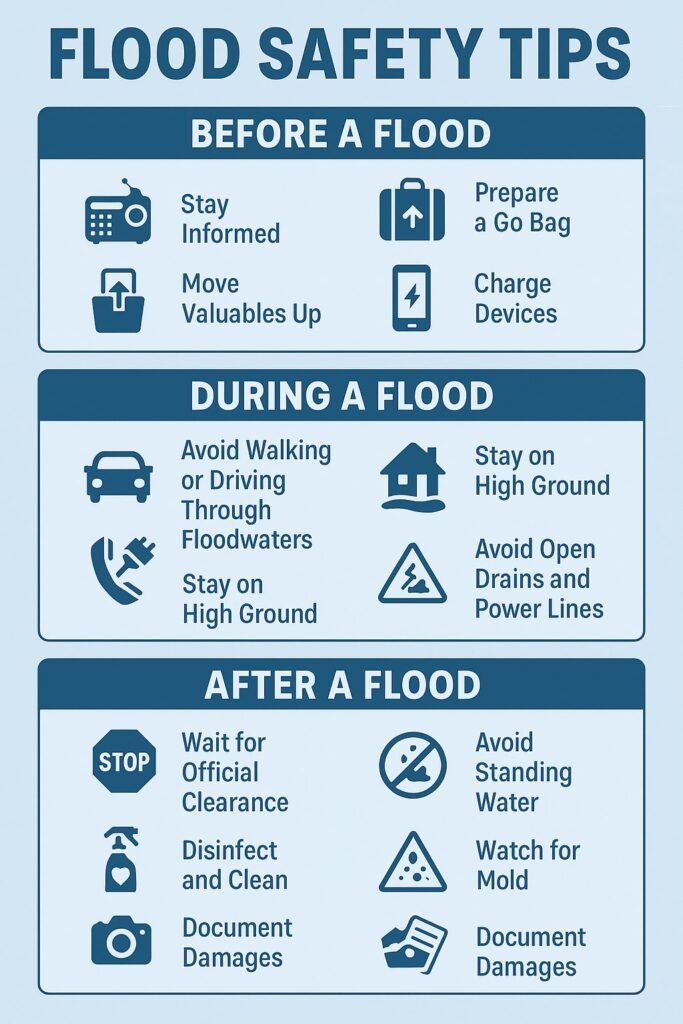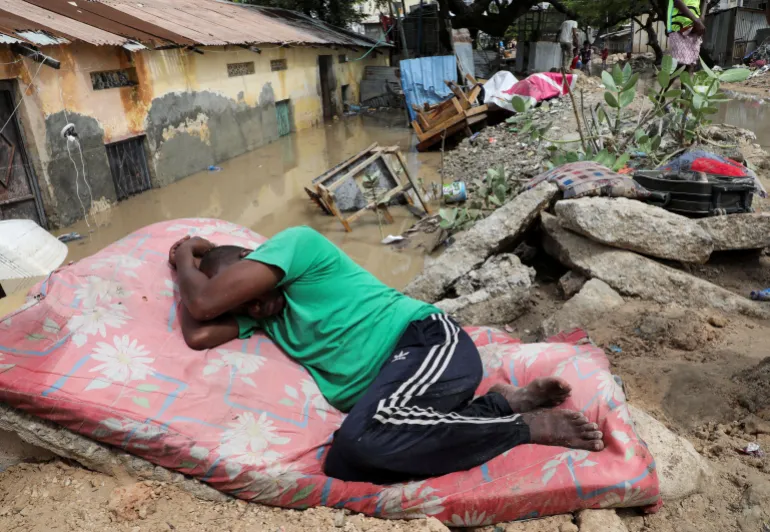Mogadishu, the capital of Somalia, was hit by heavy flooding on Friday night after intense rains lasting several hours.
The floods caused deaths and damage to the houses and infrastructure.
Governmental warnings raised as the country humanitarian crisis is getting worse.
Floods in Somalia – Government Response and Warnings:
The Somali government declared a state of emergency in affected areas.
It also urged residents to exercise caution, particularly in low-lying zones at high risk of further flooding.
Officials also warned that flash floods could occur in other parts of the country beyond Mogadishu.
Damage and Casualties of the Floods in Somalia:
- Deaths and Injuries:
Local authorities confirmed that seven people had died, including a child whose body was pulled from the rubble on Saturday morning. - Property Damage:
The floods led to the collapse of nine residential buildings and inundated homes belonging to over 200 families, forcing many into displacement and destroying personal property. - Infrastructure Impact:
Six major roads in Mogadishu were severely damaged, disrupting transportation and daily life in the capital.
Read Also:
Education in Somalia 2025 – All You Need to Know
Families in Central Somalia Face Economic Hard Times
The Floods in Somalia Affects the Infrastructure:
- Public Services:
Public transport services were disrupted, and operations at Aden Adde International Airport were temporarily suspended before being resumed. - Humanitarian Impact:
The floods have worsened the humanitarian crisis in Somalia that is already grappling with economic hardship, conflict, and limited access to essential services.
This tragedy underscores the vulnerability of Somalia’s infrastructure and the urgent need to strengthen disaster preparedness and emergency response systems.
The Somali government has called on the international community and humanitarian organizations to provide urgent assistance to flood-affected communities.
Tips to Follow in Case you are in Floods Area:
If you’re in a flood-prone area or currently experiencing flooding, your safety is the top priority.
Here are essential, practical tips to help you protect yourself and others:

Before the Flood
- Stay Informed: Follow local news, weather apps, or alerts from authorities.
- Prepare a Go-Bag: Include essentials like water, non-perishable food, medications, important documents, flashlight, power bank, cash, and a first aid kit.
- Move Valuables Up: If possible, move valuables and electrical items to higher ground.
- Charge Devices: Keep your phone and power banks fully charged.
- Know Your Evacuation Route: Plan and communicate a clear escape plan with your family.
During the Flood
- Avoid Walking or Driving Through Floodwaters
Even 15 cm of fast-moving water can knock you down. A car can float in just 30 cm of water. - Turn Off Utilities
If advised, shut off gas, electricity, and water to avoid fires or electrocution. - Stay on High Ground
Seek shelter on the upper floors of buildings if evacuation isn’t possible. - Keep Listening
Use a battery-powered radio or your phone (if service is available) to receive updates. - Avoid Open Drains and Power Lines
These may be hidden under water and extremely dangerous.
If Trapped in a Vehicle or Building
- In a vehicle: Abandon it if water is rising around it—your life is more valuable than the car.
- In a building: Move to the highest level or rooftop—don’t climb into a closed attic unless you have a way to escape.
After the Flood
- Wait for Official Clearance to return home.
- Avoid Standing Water: It can carry diseases or hide sharp objects and snakes.
- Disinfect and Clean: Use gloves and masks when cleaning up your home.
- Watch for Mold: Remove soaked items as soon as possible to prevent health hazards.
- Document Damages: For insurance or aid purposes, photograph everything before cleaning.


